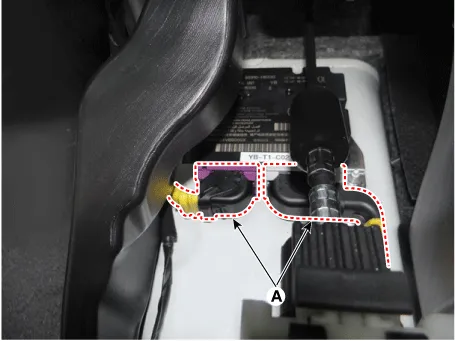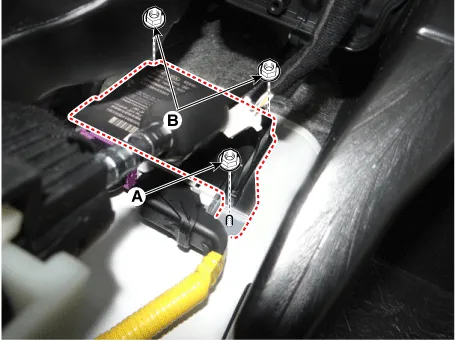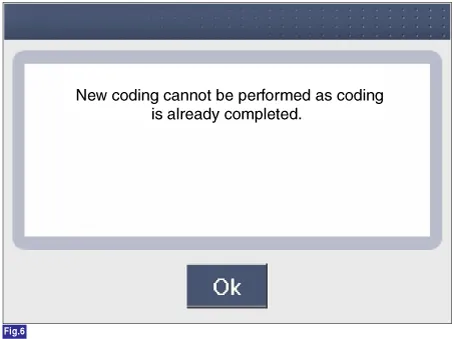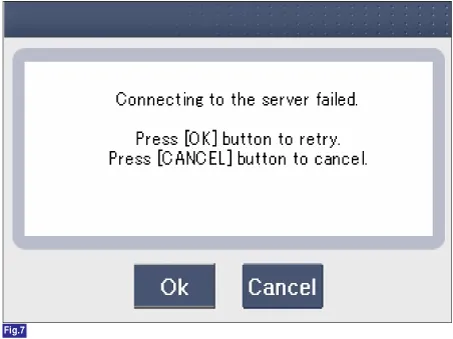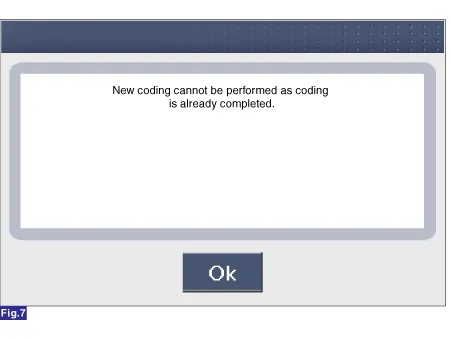Kia Rio: SRSCM / SRS Control Module (SRSCM)
Description and operation
| Description |
The primary purpose of the SRSCM (Supplemental Restraints System Control Module) is to discriminate between an event that warrants restraint system deployment and an event that does not. The SRSCM must decide whether to deploy the restraint system or not. After determining that pretensioners and/or airbag deployment is required, the SRSCM must supply sufficient power to the pretensioners and airbag igniters to initiate deployment.
The SRSCM determines that an impact may require deployment of the pretensioners and airbags from data obtained from impact sensors and other components in conjunction with a safing function.
The SRSCM will not be ready to detect a crash or to activate the restraint system devices until the signals in the SRSCM circuitry stabilize.
It is possible that the SRSCM could activate the safety restraint devices in approximately 2 seconds but is guaranteed to fully function after prove-out is completed.
The SRSCM must perform a diagnostic routine and light a system readiness indicator at key-on. The system must perform a continuous diagnostic routine and provide fault annunciation through a warning lamp indicator in the event of fault detection. A serial diagnostic communication interface will be used to facilitate servicing of the restraint control system.
Components and components location
| Components |
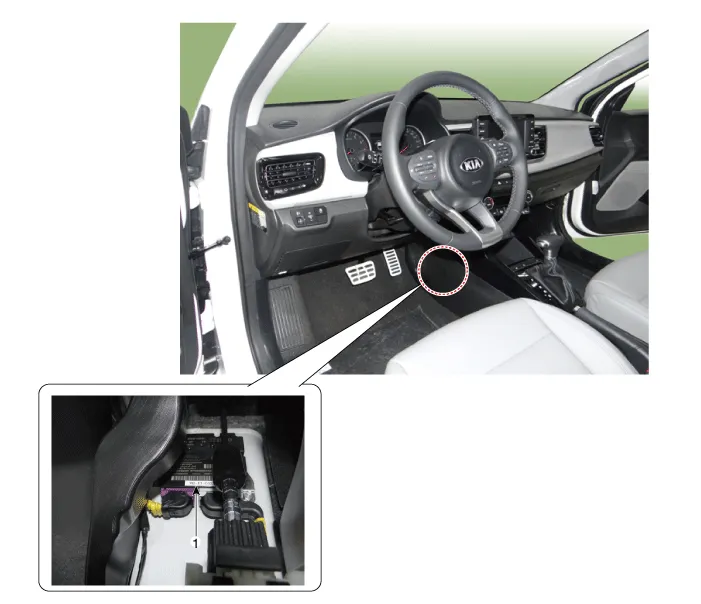
| 1. Supplemental Restraint
System Control Module (SRSCM) |
Repair procedures
| Removal |
| 1. |
Remove the Ignition from the vehicle. |
| 2. |
Disconnect the battery negative terminal and wait for at least thirty seconds before beginning work. |
| 3. |
Remove the floor console assembly. (Refer to Body - "Floor Console Assembly") |
| 4. |
Disconnect the Supplemental Restraint System Control Module (SRSCM) connector (A).
|
| 5. |
Loosen the bolt (A) and nuts (B) and then remove the Supplemental Restraint System Control Module (SRSCM).
|
| Installation |
| 1. |
Remove the Ignition from the vehicle. |
| 2. |
Disconnect the battery negative terminal and wait for at least thirty seconds before beginning work. |
| 3. |
Install the SRSCM with the SRSCM mounting bolt (A) and nuts (B).
|
| 4. |
Connect the SRSCM harness connector. |
| 5. |
Install the floor console assembly. (Refer to Body - "Floor Console Assembly") |
| 6. |
Reconnect the battery negative terminal. |
| 7. |
After installing the SRSCM, confirm proper system operation: Turn the ignition switch ON; the SRS indicator light should be turned on for about six seconds and then go off. |
| Variant coding |
After replacing the SRSCM, the “Variant Coding” must be performed.
|
Variant coding Procedure
| ■ On-Line type on KDS/GDS |
| 1. |
Ignition "OFF", connect KDS/GDS. |
| 2. |
Ignition "ON" & Engine "OFF" select vehicle name and airbag system. |
| 3. |
Select Variant coding mode. |
| 4. |
Follow steps on the screen as below. |
1) Initial ACU Variant Coding screen
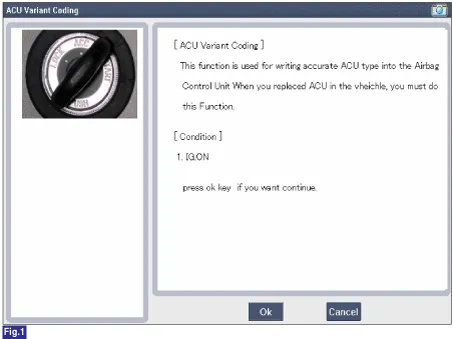
2) VIN Code entering screen
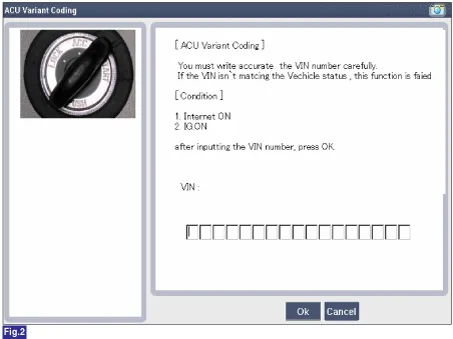
3) Variant coding's proceeding screen-1
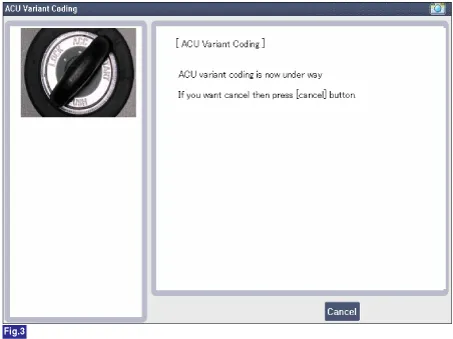
4) Variant coding's proceeding screen-2
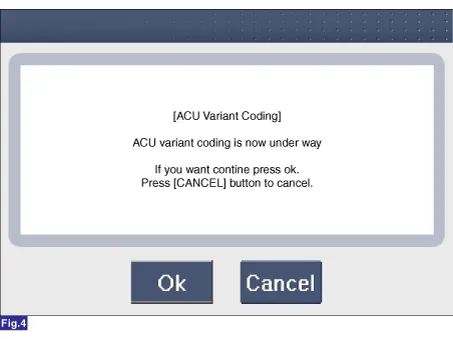
5) Variant coding is completed
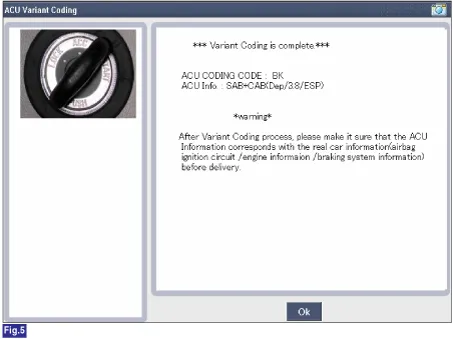
1) This screen is opened when you try the variant coding again on the SRSCM which has bee performed variant coding.
2) Screen of communication failure
|
■ Off-line type on KDS/GDS (This can be used when not connecting to internet)
1) Initial ACU Variant Coding screen
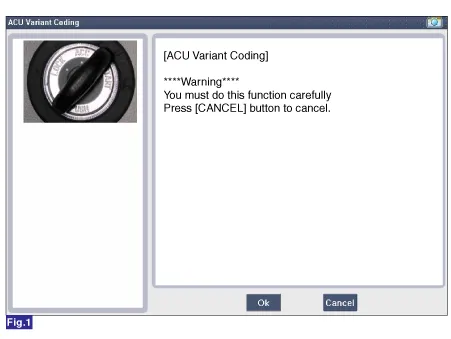
2) ACU Coding Code entering screen
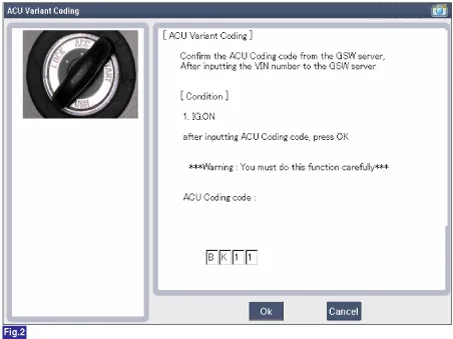
3) Screen of rechecking ACU Coding code's entering
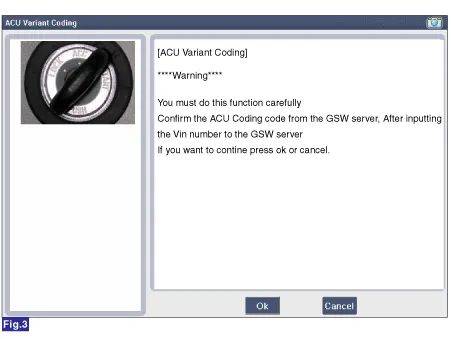
4) Variant coding's proceeding screen-1
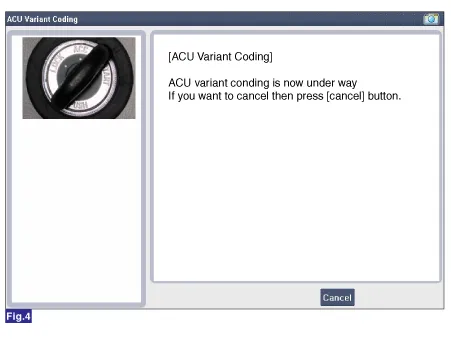
5) Variant coding's proceeding screen-2
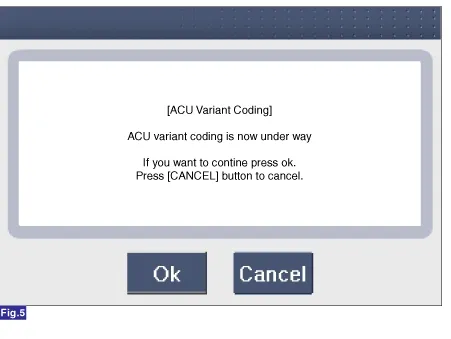
6) Variant coding is completed
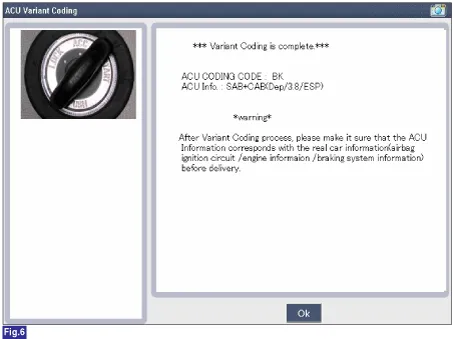
1) This screen is opened when you try the variant coding again on the SRSCM which has been performed variant coding.
|
Description and operation Description • The front impact sensor (FIS) is installed in the Front End Module (FEM). They are remote sensors that detect acceleration due to a collision at its mounting location.
Other information:
Kia Rio 2017-2023 YB Service Manual: Rear Wiper/Washer
C
Kia Rio 2017-2023 YB Service Manual: Rear Wiper Motor
Repair procedures Inspection Rear Wiper Motor 1. Remove the connector from the rear wiper motor. 2. Connect positive (+) battery cables to terminal 4 and negative (-) battery cables to terminal 3 respectively.
Categories
- Manuals Home
- Kia Rio Owners Manual
- Kia Rio Service Manual
- Rear Drum Brake
- Engine Control / Fuel System
- Battery
- New on site
- Most important about car

